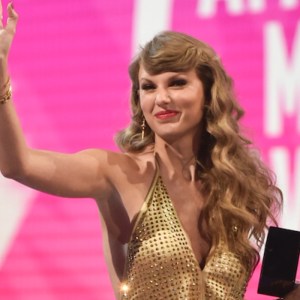The traditional nursery rhyme “Little Bunny Foo Foo” is one of the oddest standard kids songs out there. It’s about a rabbit who “bops” field mice on the head and is visited by a fairy who threatens him with turning him into a “goon” if he continues his behavior.
Videos by American Songwriter
It’s part story, part moral, part song refrain. But for some reason, it sticks in the minds of children and adults alike. Why?
Let’s find out below.
Origins and Meaning
Sung to the tune of the French-Canadian children’s song “Aloutte,” or the American “Its Bitsy Spider,” this cautionary nursery rhyme talks about the consequences of one’s actions. It says: if you’re a bully, you will be reprimanded. And people will know. But it does so with cute language, memorable characters, and a fun tune. The performance of the song also involves hand gestures for the “scooping” and “bopping” of the field mice.
But the moral of the story is that if you pick on those smaller and more innocent than you, the moral authority—aka the Good Fairy—will make you pay. Even giving you a few chances first to clean up your act. But, of course, Little Bunny Foo Foo doesn’t heed her warning and, thus, incurs the consequences. He’s made into a goon for all to see.
Some of the earliest known references to the nursery rhyme include Beverly Cleary’s 1970 children’s book, Runaway Ralph, which cites it as “Little Rabbit Fru-Fru” and a 1970 issue of The New Yorker, which calls it “Little Bunny Photo Photo.”
The Lyrics
The most common version of the lyrics these days goes like this:
Little Bunny Foo Foo,
Hopping through the forest,
Scooping up the field mice,
And bopping them on the head.
(Spoken) Down came the Good Fairy, and she said,
“Little Bunny Foo Foo,
I don’t want to see you,
Scooping up the field mice
And bopping them on the head.”
(Spoken) “I’ll give you three chances,
And if you don’t behave,
I’m gonna turn you into a goon!”
The verse repeats three more times, each with Little Bunny Foo Foo not heeding the Fairy’s warning. Each time, he loses a “chance.” In the fourth stanza, the lyrics go:
“I gave you three chances,
And you didn’t behave,
And now I’m gonna turn you into a goon. POOF!“
Sometimes here, the ending includes a pun that says: Hare today, goon tomorrow!
Other Renditions
In some other renditions, Little Bunny Foo Foo kisses the field mice, instead of “bopping” them. This interpretation brings in an interesting morality. No longer is the rabbit bringing violence, but rather a sense of love and affection.
In another telling, in Cori Doerrfeld’s children’s book, Little Bunny Foo Foo: The Real Story, there is an origins story to the rabbit’s violence. The mice, or rats, have come in and stolen the desserts he’s making. Thus, with a right to “bop” them on the head, he does just that. But the Fairy doesn’t know about this part of the story. So, her reprimand is both unwarranted and out of line.
In yet another, the Fairy tells Little Bunny Foo Foo to stop bopping field mice on the head, so the rabbit goes out and bops other animals on the head. This moral seems to be: be specific.
In Popular Culture
The popular indie band, The Moldy Peaches, sang a version of the song on their studio album.
The song also is noted in the chapter book, My Little Pony: Friendship is Magic. It’s also used in a Barney video, The Backyard Show and also mentioned in a Sesame Street segment, Abby’s Flying Fairy School.
South Park uses the song when the character Butters sings it while auditioning for a boy band.
Final Thoughts
The nursery rhyme is interesting for many reasons: its repetitiveness, its memorable characters, and, perhaps most interestingly, the way it flips its moral perspective.
We are introduced to the titular character, a rabbit. What could be more harmless? Plus it has a name, Little Bunny Foo Foo. Again, harmless.
But as the nursery rhyme progresses, we learn that looks can be deceiving. This fluffy bunny is really a violent aggressor (at least, given all the information we have at hand). And thus, the even more noble character, the Fairy, comes down from the heavens and gives our protagonist three chances to shape up.
Unable to, however, our protagonist becomes our antagonist right before our eyes. It’s a shape-shifting unlike many in nursery rhyme history. That, most likely, is why it sticks in our minds the most today.
